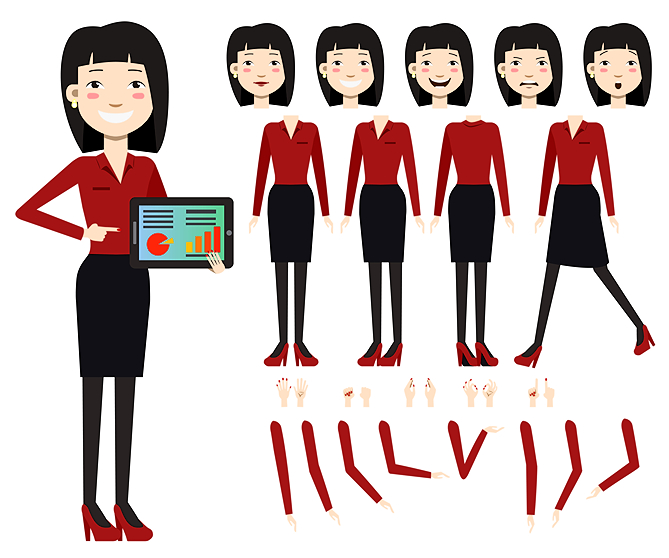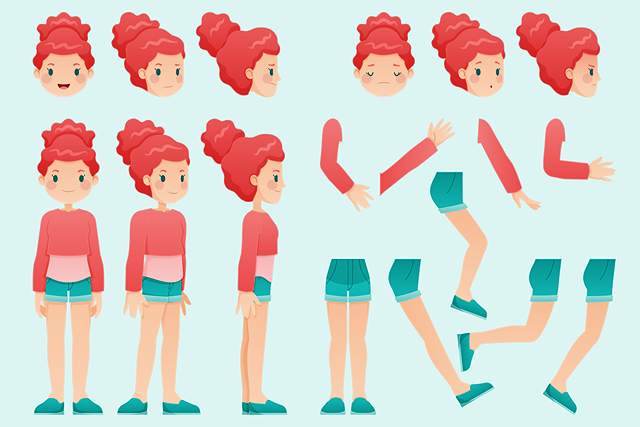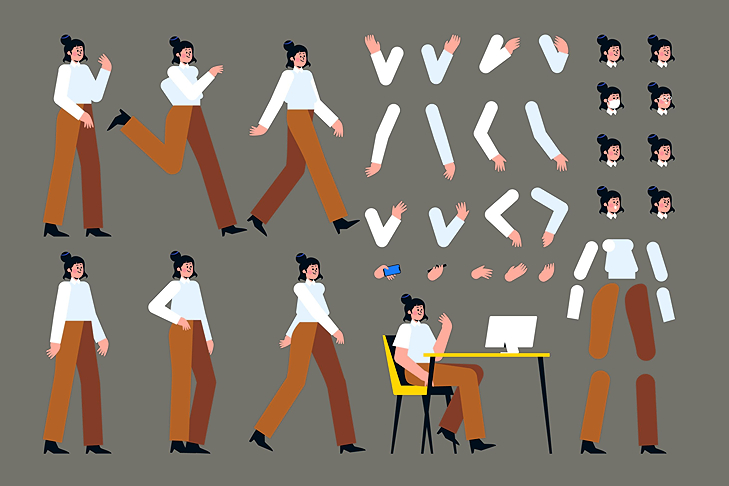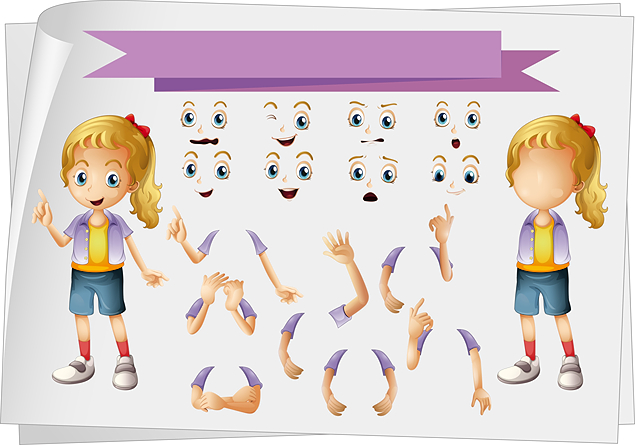What Is Meant By Cut-Out Animation?
Cut-out animation is the most basic and maybe the oldest type of animation.
In this article, we examine the idea of cut-out animation in more detail. Using this technique, pre-cut pieces of the appropriate design are moved frame by frame to suggest movement.
Each of the cut-out parts is separated into however many components are required to animate the object before being utilized as a puppet in animated motion graphics.
History:
The Argentine director and cartoonist Quirino Cristiani, born in Italy, is credited with being the first to do cut-out animation. In 1916, he made the one-minute La intervención in la provincia de Buenos Aires using cardboard cutouts; tragically, it was eventually destroyed in a fire. The longest-surviving example is the 1926 film Die Abenteuer des Prinzen Achmed, directed by Lottie Reiniger.
What Are The Benefits Of Cut-Out Animation?

What is the purpose of cut-out animation? To make it easier for you to read, we’ve listed some benefits of cut-out animation below:
Appealing And Enticing
One of the sweetest and happiest styles of animation is unquestionably silhouette cut-out animation, which is especially captivating for young viewers. It is a very accessible medium. Your audience will undoubtedly smile when they see it.
A Lot Of Fun!
Forget about the viewers! No matter your age, making moving pictures using the stop-motion technique is rewarding and genuinely enjoyable.
Simple Tales Can Be Made To Come To Life
Cut-out animation is an engaging method of telling your story and bringing it to life. A unique touch is being able to create the cut-outs on your own. This enables the finished output to express the scope of your ideas in a moving image.
Simples!
Cut-out animation has several benefits, but its need for significantly fewer drawings than full-scale cel animation is its most important perk, especially for a lone animator. To portray a movement that would ordinarily take hundreds of cels, the animator may even use a single drawing that has been sliced into parts.
Child-Friendly
Cut-out animation is so easy to use that even 3-year-olds frequently use it for creative projects. This indicates that the method has developed into a highly popular type of animation that is incorporated into curricula for young children.
Creativity is elevated to a new level when the conventional art and craft methods taught in schools are combined with animation. Teachers can creatively and easily integrate digital and traditional art. All you require is colorful paper or card, scissors, a webcam and stand, stop-motion software, and, of course, your imagination.
What Is Cut-Out Vs. Cel Animation?

Using simple cut-out forms, the animator’s goal is to represent a character, setting, or concept. Cut-out animations require a greater number of small drawings than full-length cel animation. An animator can reuse many elements by simply moving them around to produce fluid movement.
Cel Animation
What is a cutout animation? A series of static frames are produced using the animation technique known as cel animation, using hand-painted pictures called cels.
These frames are taken one at a time to give the appearance of movement when played back at 24 frames per second. Modern productions occasionally use digital files instead of the traditional translucent materials like cellulose acetate and/or gelatin used to create the cels.
Animators mostly employed cels in the early days of cel animation since they were, in a way, more affordable than live-action films. Even though practically all cartoons are made on computers today, many animators still prefer to use cels.
Features Of Cel Animation:
- employed in conventional 2D animation
- expensive and time-consuming,
- not done frequently anymore
Cutout Animation
A form of animation known as “cut-out animation” involves moving pre-cut pieces of the desired shape frame by frame to simulate movement. Take character animation as an example. To begin, we will divide the entire character into the number of cut pieces that will be used to animate the character.
Features Of Cut-Out Animation:
- makes basic stories interesting
- Time-effective
- entertaining to watch
Cut-out animations require a greater number of small drawings than full-length cel animation. An animator can generate smooth movement by simply moving a number of components around. It may only take one animator to complete this project, which makes it simpler to carry out.
Is Cut-Out Animation Still Used?

The previous few years have seen a significant adaptation of animation, like any other art form, to our contemporary technological world. Ironically, one of the few methods used in the medium that hasn’t altered all that much throughout the years is cut-out animation.
Though Reiniger’s unconventional style has a long history, it continues to influence filmmakers. The cut-out is still regarded as a good starting method for new animators in today’s highly complex world of art and design because of its efficiency and simplicity.
Director Terry Gillam’s choice for animated inputs and sequences in all of the Monty Python movies serves as a notable example. As a result of using cut-out animation, Gillam had grown accustomed to the surreal look it gave his movies.
With the pivot points designed in 2D or 3D space and the subsequent rotations automatically programmed by the software, the puppet figures are animated digitally on a computer system. Of course, there is one distinction. Tweening animation is the term for this procedure.
This production method not only gives a certain style but also saves a great deal of time and money. South Park, an animated television program with digital cutouts
Although many people are probably also turned off by the limitations offered by the animation style, To properly captivate your audience, you might want to combine several animation styles with cut-out animation. This means you can strike a balance between the drawbacks of cut-outs and the complex techniques of 2D animation or 3D animation.
How Do I Create Cut-Out Animation?
Are you prepared to produce a cut-out animation movie? To create your cut-out animation, you’ll need a few supplies, including a cutting mat, bristol board, gaffer’s tape, scissors, a knife, a pencil, thread, and coloring materials. Other alternatives include pens and other projectiles.
The steps are listed below:
Step One: Drawing
Sketching is done as the process’s first phase. Start by completely sketching the characters and props; be consistent with the size so they may subsequently be utilized as a template. After sketching the entire figure, separate each part and be sure to take into consideration the way the heads, arms, and legs overlap.
From many perspectives, including front, back, and profile, the character should be produced. Your character’s movement will be more dynamic as a result. Not to mention, use color and be as creative as you can. Drawings can be created manually or with the aid of Adobe Photoshop.
Step Two: Assembly
After that, assemble the characters by attaching the various body parts with aluminum wire or adhesive. Avoid glue clumps and maintain the integrity of the wire. Don’t forget to segment the features of the face so that animation is possible during the entire sequence. After that, arrange the finished character flatly in the background.
Step Three: Animation
The animation process, which is the last step, is quite comparable to stop-motion animation. They must stay in their roles for long enough for viewers to comprehend the characters’ objectives and emotions.
To move the character for follow-through, ease in and out, and anticipation, follow the guidelines established by Disney animators Ollie Johnston and Frank Thomas, frame by frame. The transition between the front, rear, and profile views naturally occurs by using the rough sketches created from various perspectives.
Final Words

A quick way to keep your animation budget in check is to use cut-out animation.
Incorporating distinctive design features will help your project stand out. Don’t undervalue its ability to convey a story through its distinctive eccentricity, even though it is rather simple.
We hope this blog has aroused your interest in the field of animation and that you will keep investigating the opportunities that are there.



